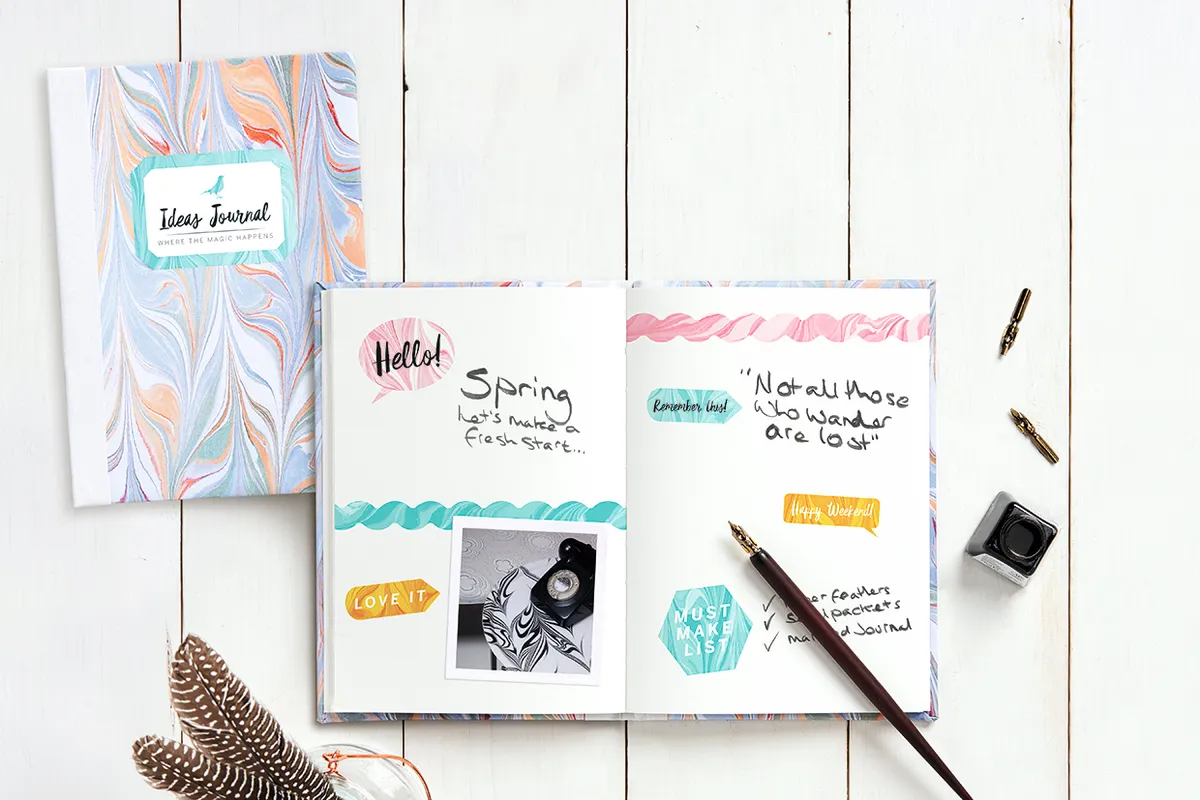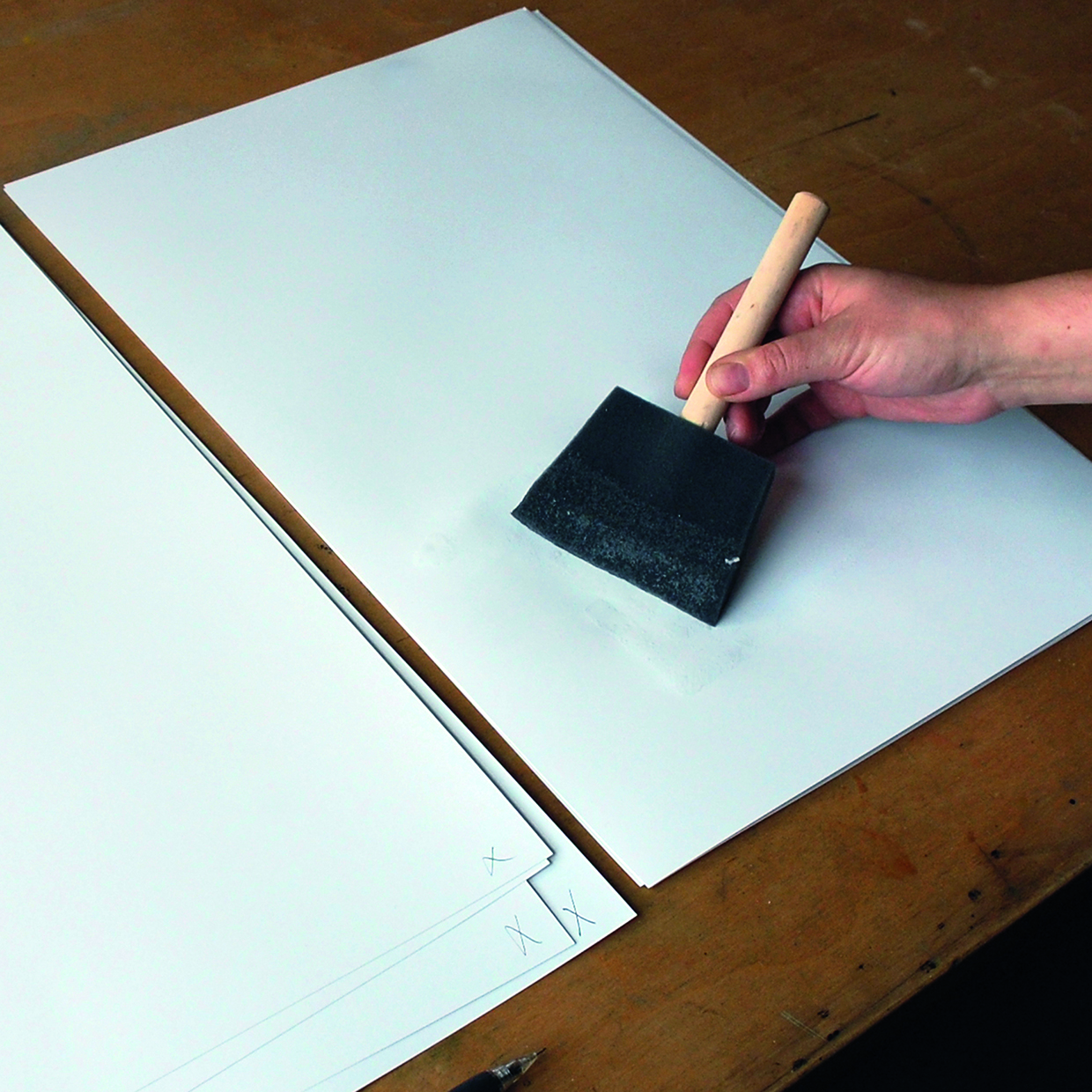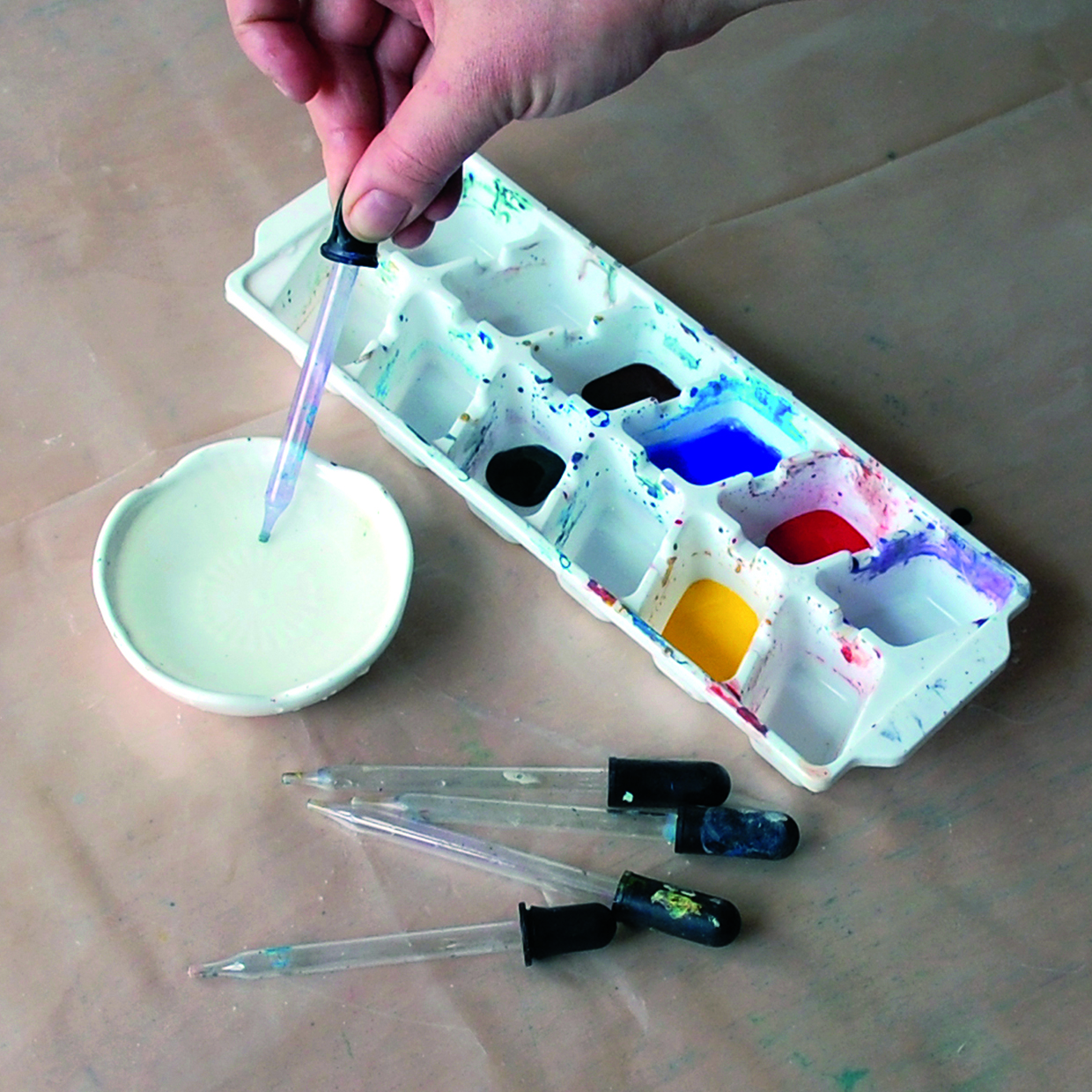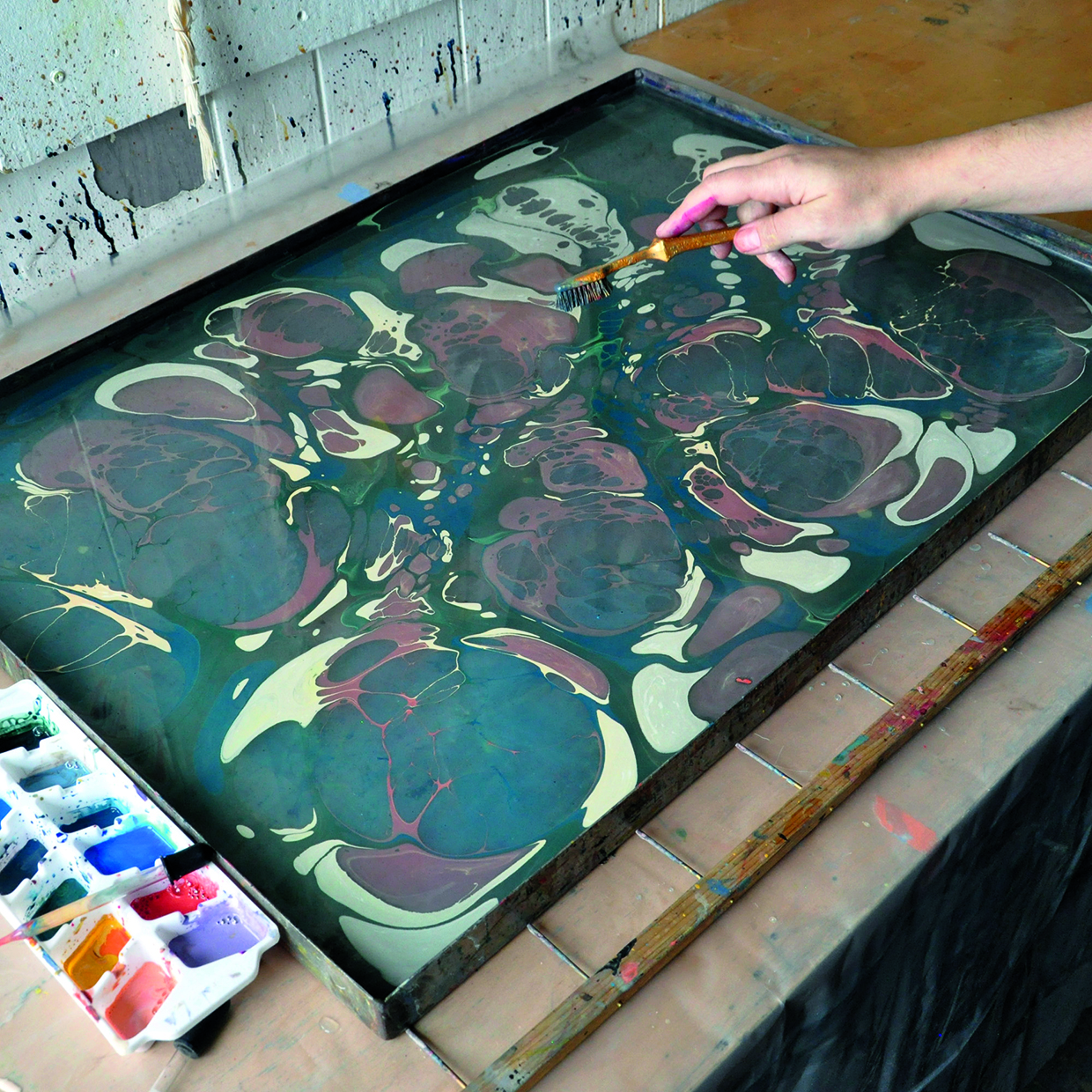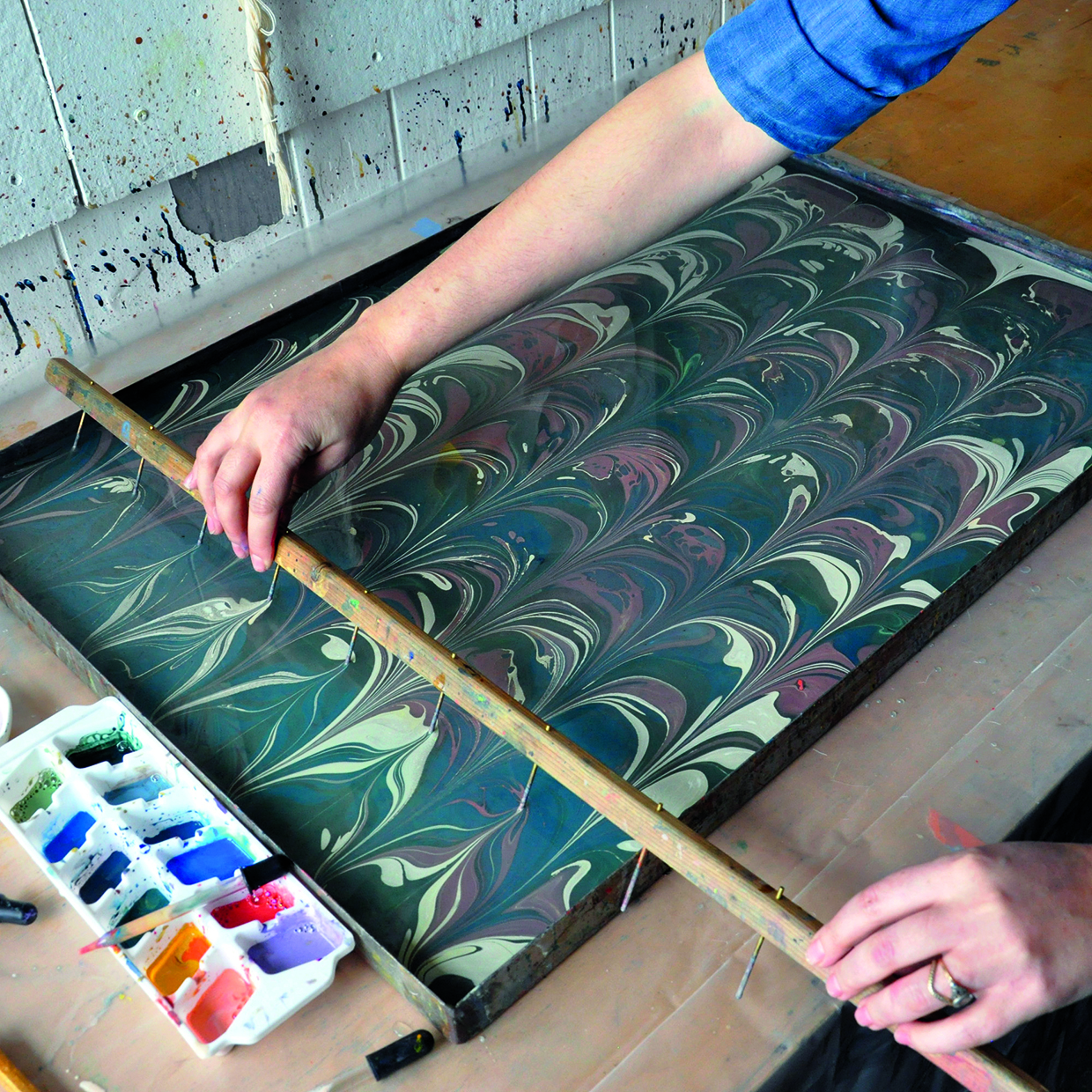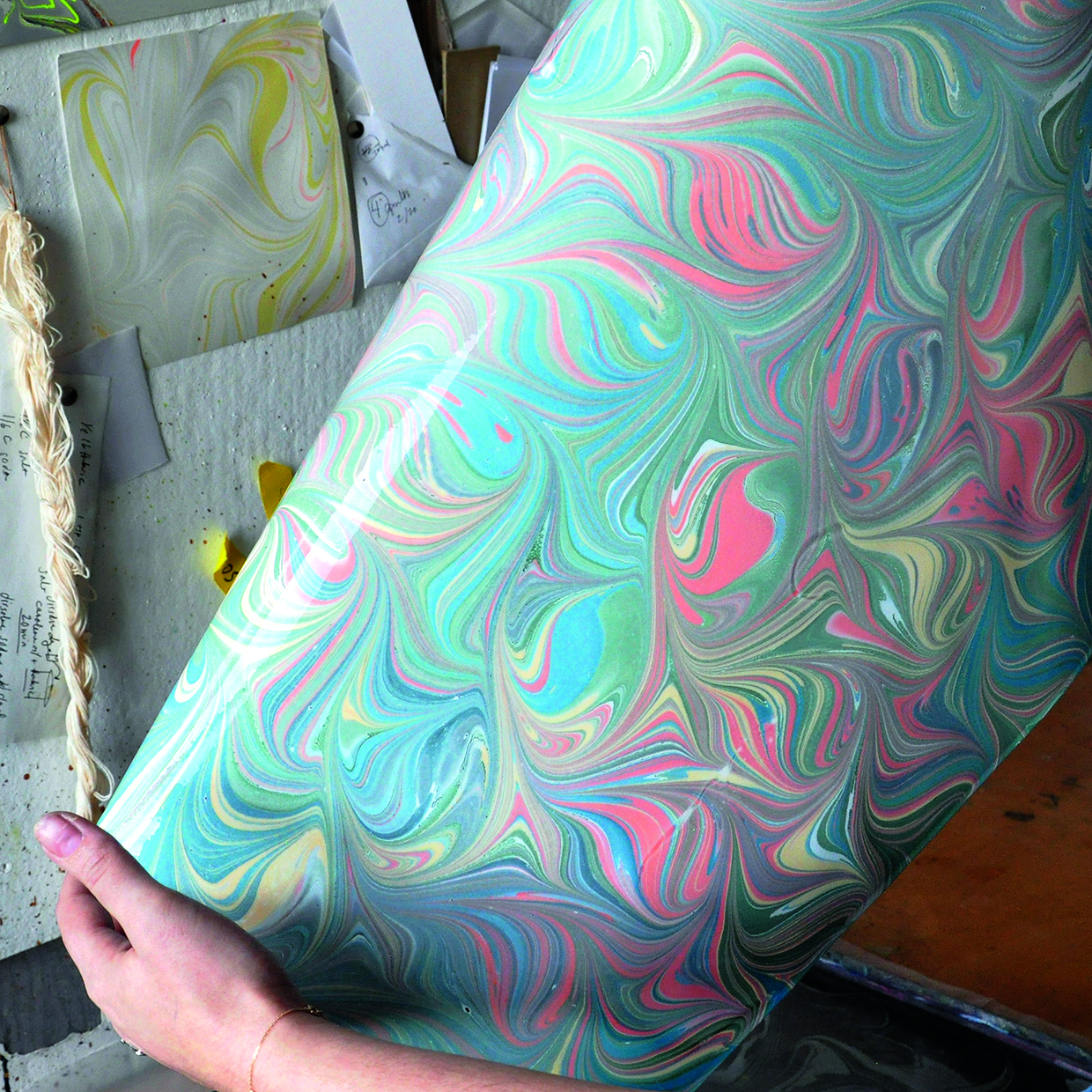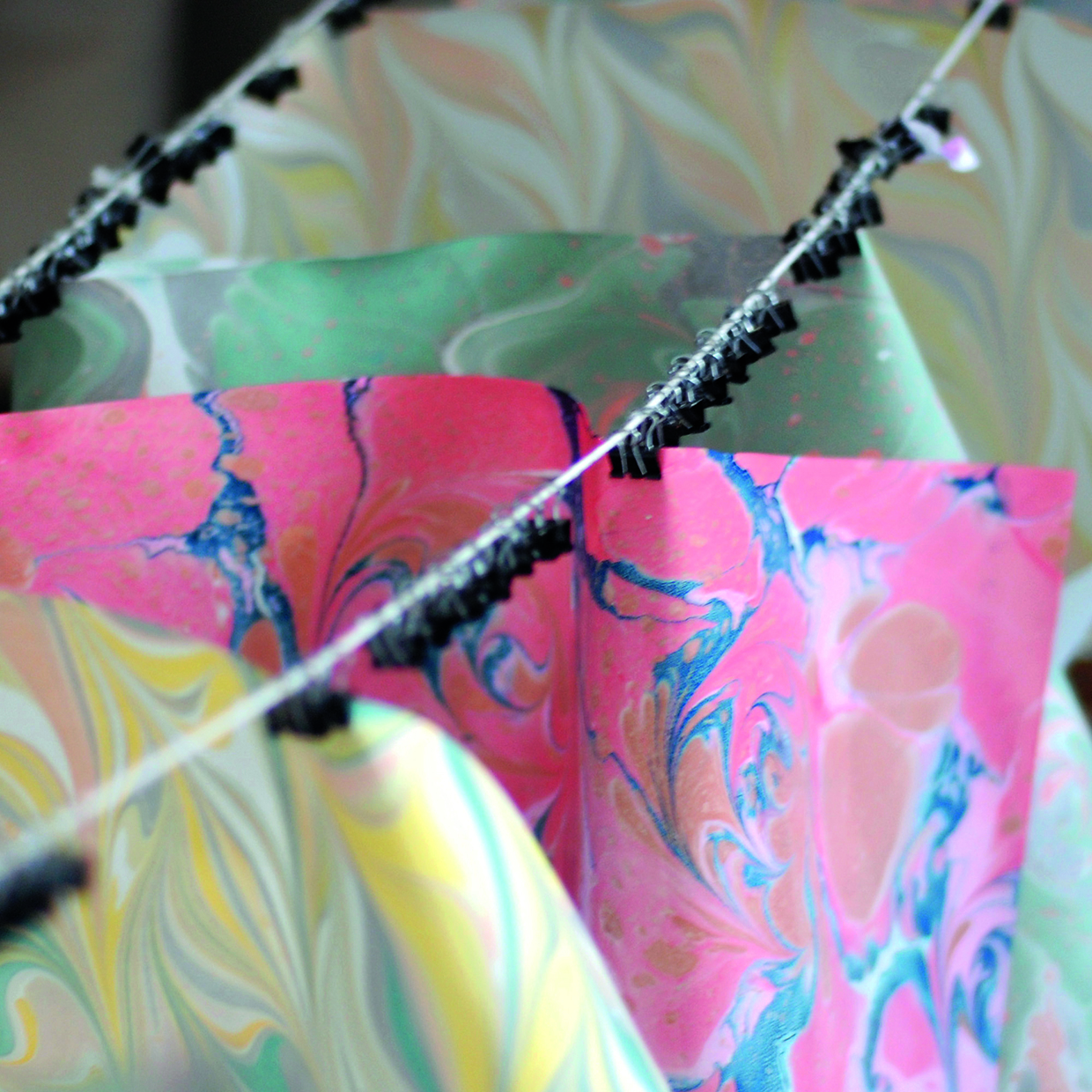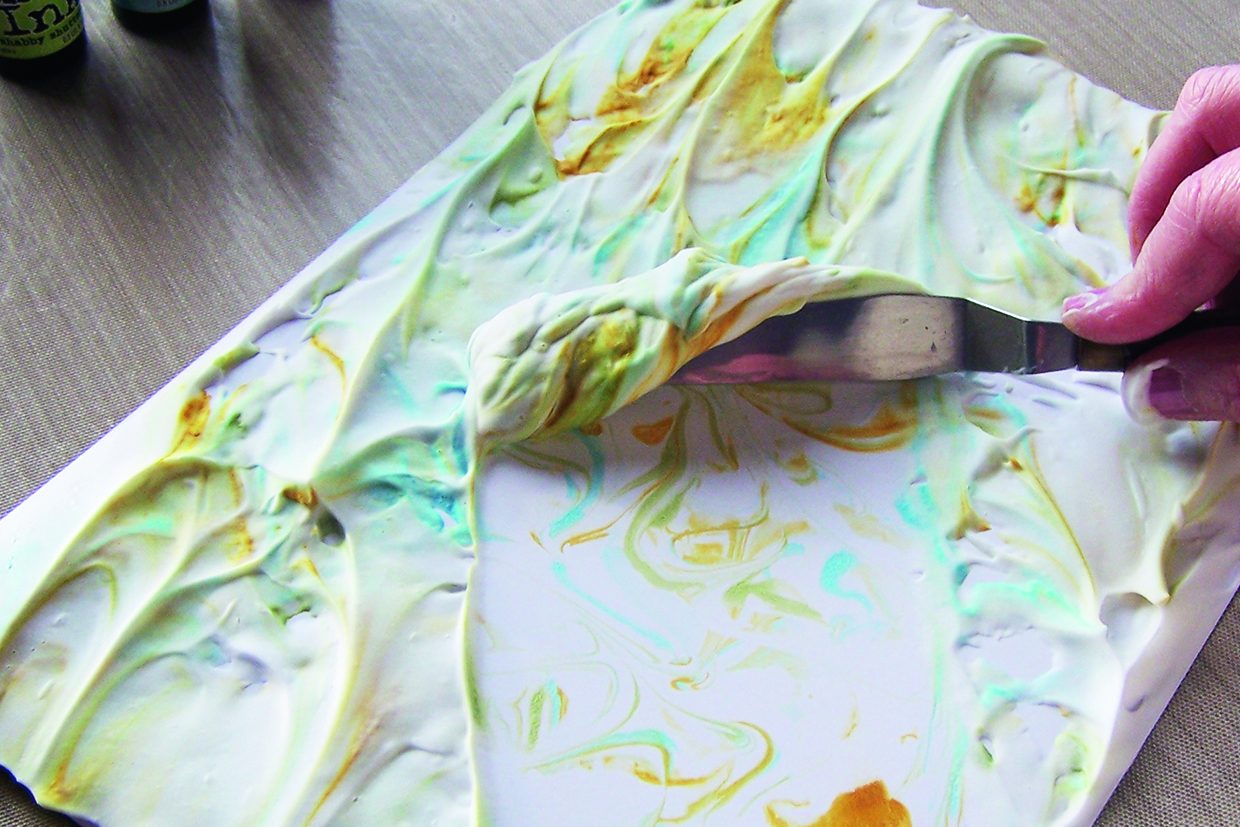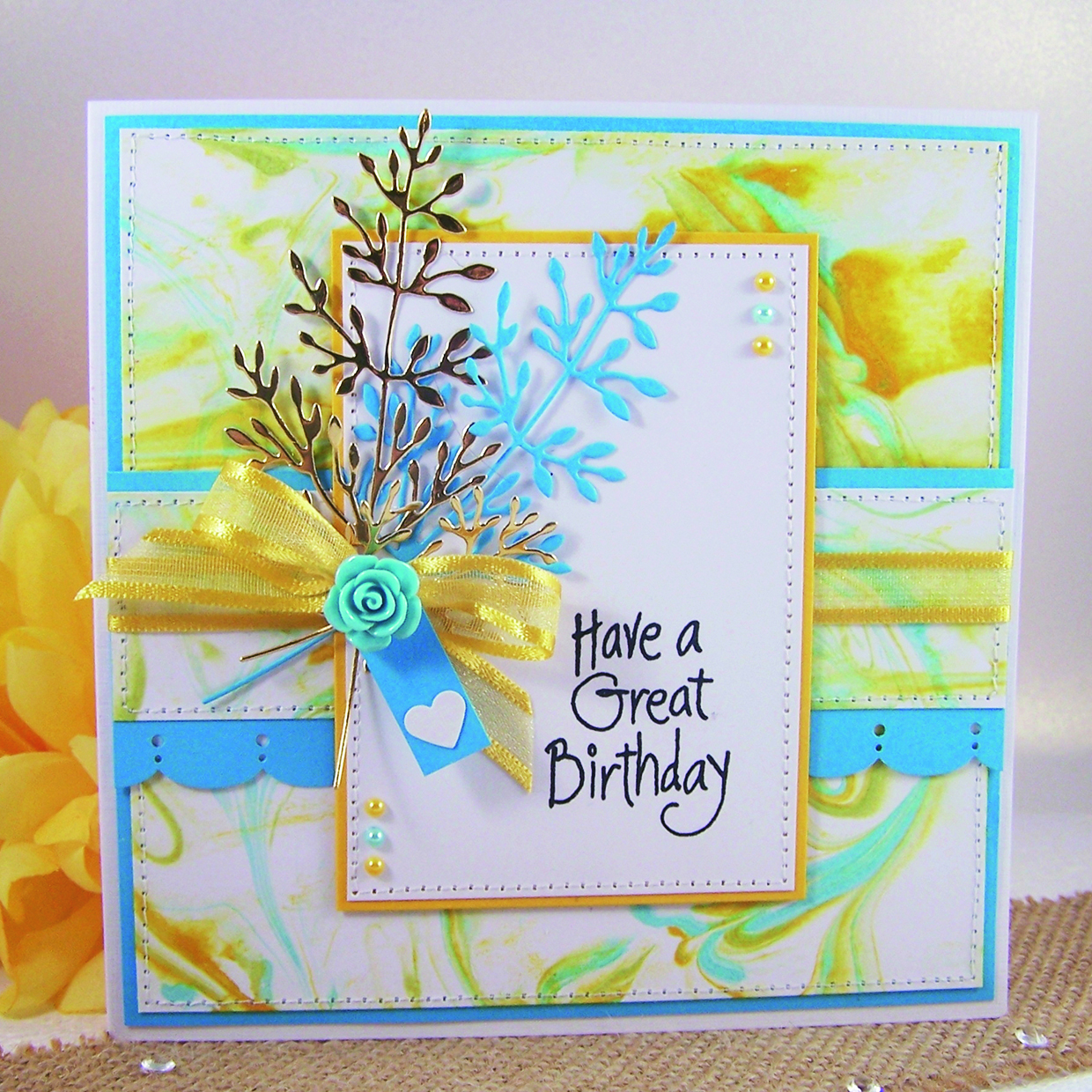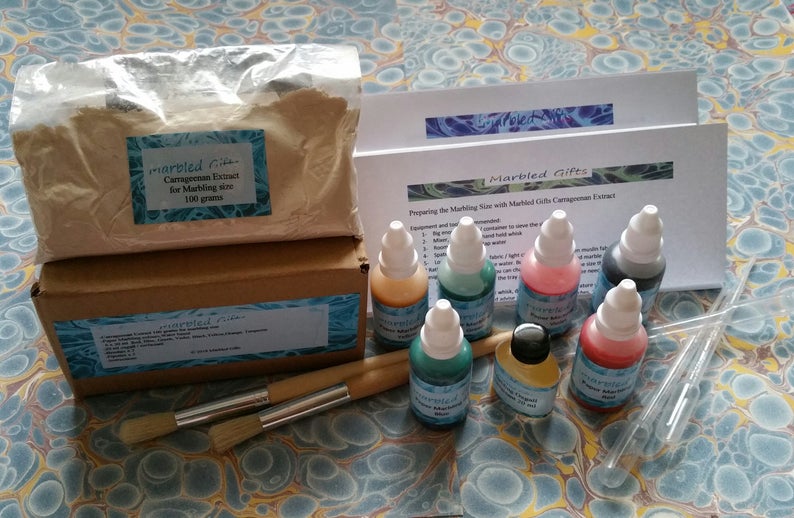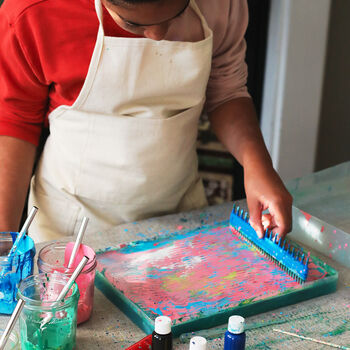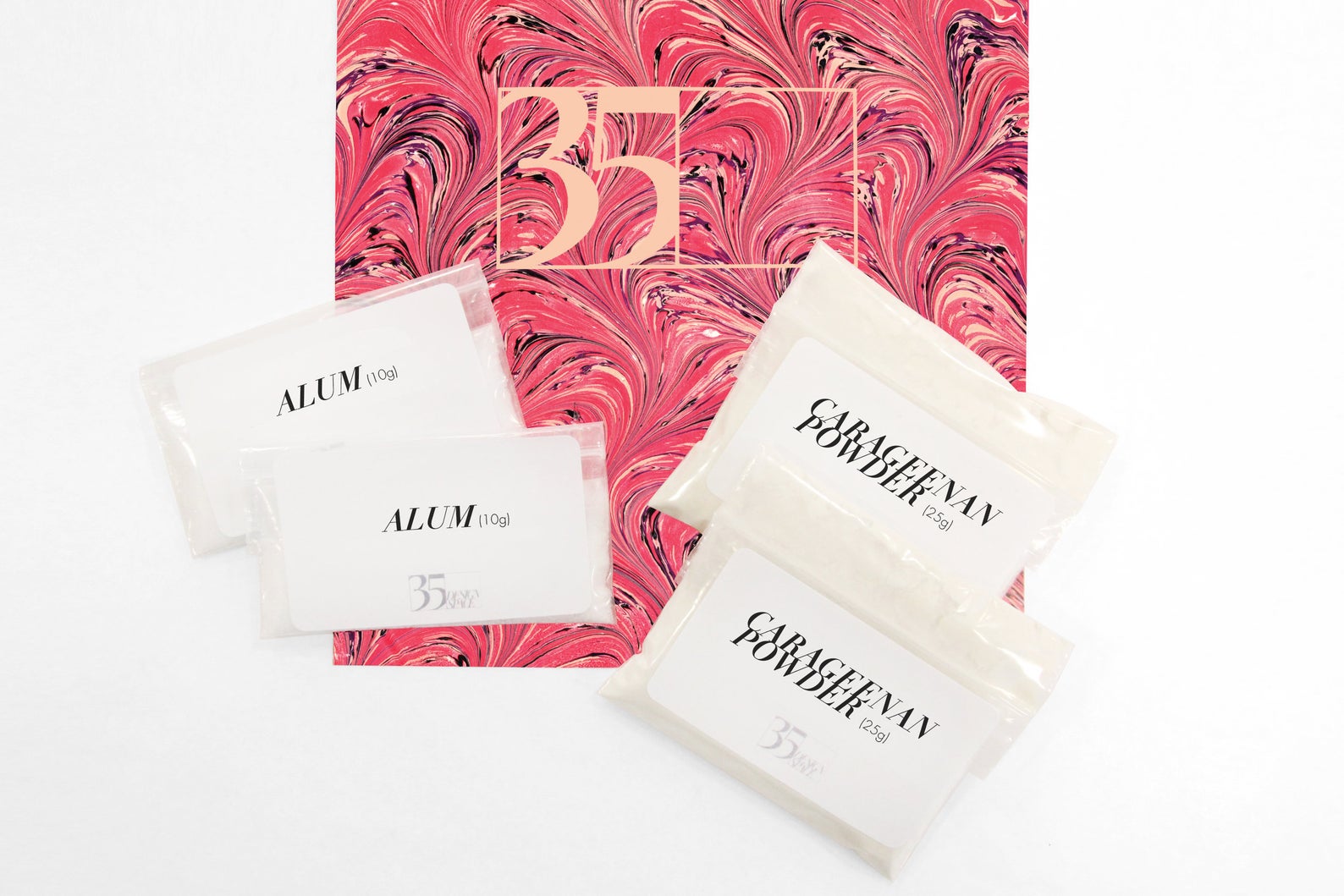Immediate yet meditative, the craft of marbling can be approached as pattern-making, drawing or an exploration of colour. Paper marbling is a centuries-old craft long prized by bookbinders and bibliophiles. Once the closely held secret of master marblers, only trusted apprentices were taught the strange alchemy of pigments and the complex patterns they create when marbling inks and pigments.
The marbling process requires a vat filled with gelatinous size, made from water thickened with carrageenan or tragacanth. Paint sprinkled over the surface of the size spreads with the aid of a dispersing agent, historically the treated bile of an ox. The paint is then manipulated into patterns with a stylus or series of combs. When a sheet of alum-treated paper is gently laid on the size, it picks up the pattern, which looks as if it were still dancing on water.
The craft of marbling gradually spread through Europe until it was common to every bindery and marbling ink and pigment to give patterns graced the endpapers of most books. With the mechanisation of bookbinding, paper marbling fell from favour, but the tradition was saved from obsolescence with the 1970s’ renewed enthusiasm for hand crafts. Since then modern synthetic pigments and additives have simplified the alchemy involved, making marbling both more practicable and predictable in outcome. These developments also make the craft ripe for experimentation and expansion.
Paper marbling today can be approached as pattern-making, an exploration of colour or drawing. It can be serenely meditative or wildly experimental. Marbling patterns are not drawn by the marbler alone, but by a combination of the manual, chemical and natural phenomena acting on the pigments as they float. It is a remarkably immediate art form, in which each monoprint captures the precise moment when the fluid media are transferred to paper. The liquidity of the medium and the process, as well as the potential for additive layering of one pattern on another, allows the marbling artist to alternate between controlling the materials and drawing inspiration from unexpected outcomes. In a craft with centuries-old roots, this creates an opportunity for expressive unity between creator and creation and the growth of personal vision.
Here we showcase two marbling techniques, with a guide to marbling large pieces of paper from book and textile artist Natalie Stopka, which was originally published in Project Calm issue 5, and a guide to marbling with shaving foam, which is a simpler ink marbling technique for the crafters without a lot of space and equipment. Which marbling method is the right one for you to try?
Main image: © Mila Naumova
This article contains:
- How to make marbling paper (traditional technique)
- How to do paper marbling with shaving foam
- Best paper marbling kits
How to make marbling paper tutorial
